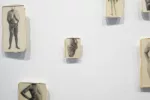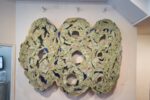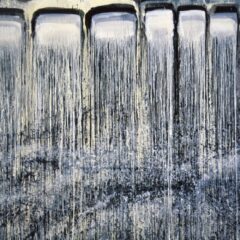Two men known for their art work about gay sex, spoke about the work and the sex at the Print Center Feb. 23. Now thirty years after AIDS became a public health issue, artists Gabriel Martinez and Chad States expressed their attitudes toward gay sexual practices in the age of AIDS and how those attitudes were expressed in their art. Print Center Curator John Caperton moderated.
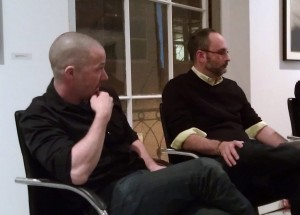
For all the differences between the two artists–Chad States is younger and is more carefree and open about his sexual practices.
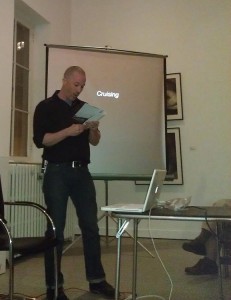
He read a story about his first anonymous sexual encounter as a teen, replete with graphic descriptions. The story, which appeared in Alec Soth’s Lonely Boy Magazine, issue A-2, was startling in its almost confrontational truth-telling.
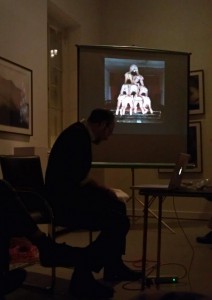
Martinez, who shows at Samson Projects gallery in Boston, has a darker more sideways approach. He raced through a series of projected images, without a lot of comment except for the occasional explanation of what we were all looking at–a series of headless self-portrait photos of and by straight men climaxing, or the artist crouched in the center of a circle of standing men “literally coming on my head.”
Caperton asked what surprised Martinez most about his most recent work.
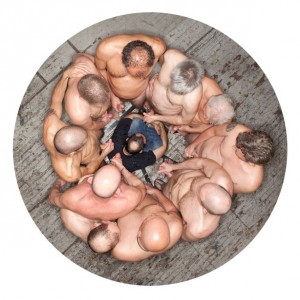
“I surprised myself at how angry I was, making the work,” said Martinez, Martinez said he was in 7th or 8th grade at the beginning of the AIDS epidemic. “I’m pissed off at the youngest generation,” he said, referring in part to the resurgence of extremely risky sexual behavior (and concomitant rise in HIV rates among gay men and men of color) and the news of the latest gay suicide.
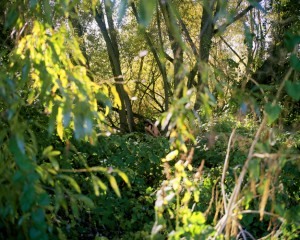
States said his work–photographs of gay anonymous-sex locations in the woods–is a celebration of sex. “With the right information, we can go back to this sexually liberated place.”
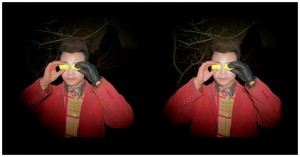
For all the differences, however, I came away with a strong sense of the unity in their experience as gay men. They both make art that is permeated with issues of anonymity. Martinez took a series of photos of Japanese gay men with Peeps in front of their eyes. In another series, he solarized internet nude self-portraits of men, to emphasize the anonymity created by the flash that blocks their faces.
His recent photo of a human pyramid of men wearing nothing but jock straps, their butts toward the camera, again hides identities at the same time that it flaunts, celebrates and recognizes the vulnerability in the bodies.
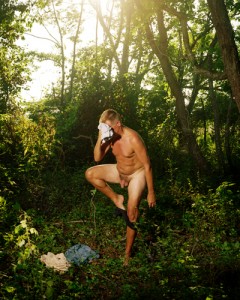
States, on the other hand, doesn’t buy into vulnerability. He talks about his sexuality and his passion for the quick encounter with matter-of-factness mixed with nostalgia for a lost time. He said he was trying to capture “the community that happens in these spaces that we carve out against society.” He’s worried that these spaces are dinosaurs, being killed off by gay chat rooms on the Internet–places to arrange an anonymous tryst at home.
States is making his own the anonymity that society has forced upon him as a sexual gay man. “Anonymous sex is very exciting. You don’t have to pay a cover charge. You can do it in the day.”
As the talk drew to a close, an art student in the back of the room complained, what am I supposed to take home from this? The lessons were there, but they were embedded in indirections, and highly personal. I came away with the stories of two different men who have found ways to be who they are, and ways to make art about it.


